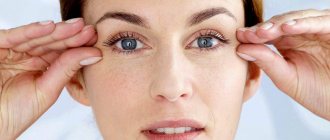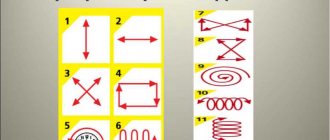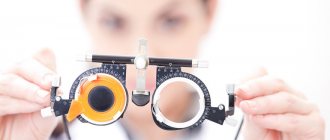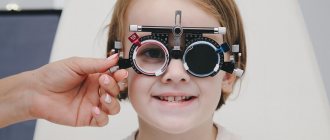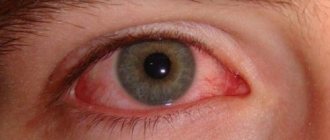- Universal exercises to preserve vision
- Norbekov's technique
Perfect vision is the dream of many. In fact, almost anyone can keep it for life. It is enough just to constantly perform gymnastics for the eyes. Everyone can learn simple sets of exercises. Finding time to study is also not difficult. You only need 5-10 minutes a day.
The benefits of gymnastics for the eyes
Vision exercises provide invaluable benefits not only to the eyes, but also to other organs.
This is due to the fact that gymnastics allows you to:
- Relax. Even a 5-minute break from working or studying new material will provide an opportunity to distract yourself, gain strength and prepare for further solving the most difficult problems. When doing exercises, you are distracted from what is happening around you. At the same time, you get the opportunity to concentrate on your personal feelings. Anxiety and nervousness disappear on their own.
- Improve memory and generally expand the capabilities of the brain. By doing exercises, you activate cerebral circulation. This helps stimulate recovery and regulatory processes.
- Relieve fatigue. By switching from monotonous work, massaging your eyeballs, you relax all the nerve endings.
- Improve vision. Many exercises are especially effective in childhood. If they are performed regularly (especially with myopia in the initial stage), it is indeed possible to restore 100% of vision, even if it has already begun to decline.
- Stimulate the functioning of the tear ducts. Special exercises allow you to forget about dry eyes and the burning sensation that accompanies it, and make your eyes look fresh and healthy.
- Stop vision loss. Restoring blood supply stimulates the flow of vitamins and oxygen to the most important elements of the eyes.
To whom and when are eye exercises contraindicated?
Contraindications to exercises to improve vision are:
- Conjunctivitis and blepharitis. Exercises are not recommended for exacerbations of inflammatory diseases. This is due to the fact that eye gymnastics stimulates metabolic processes and the secretion of tear and other fluids, which quickly spread dangerous bacteria. Harmful microorganisms can also get on the face, causing various inflammatory reactions.
- Retinal detachments. With this pathology, the retina of the eye is separated from the vessels. Exercise may cause further deterioration of vision. Performing them without a doctor’s advice is strictly prohibited!
Also, gymnastics should not be done immediately after eye surgery. Exercise may cause stitches to rip apart or bleed. You should start exercising only after receiving appropriate recommendations from an ophthalmologist.
Efficiency of classes
Gymnastics for eyes with farsightedness
helps slow down the development of vision pathology.
The effectiveness of eye charging for farsightedness
is to restore visual acuity and reduce the risk of its deterioration. This is due to a number of factors:
- blood circulation improves in the cervical spine;
- blood circulation in the eye muscles increases;
- the eye muscles are trained;
- the lens is stimulated to support the ability to focus correctly.
Examples of eye exercises
Universal exercises to preserve vision
Do you want your vision to remain clear for a long time? Perform simple gymnastics, which includes exercises such as:
- Closing your eyes. Sit on a chair and close your eyes. Open your eyelids. Repeat the exercise 8 times at intervals of 5-10 seconds. A simple complex will strengthen the muscles and at the same time relax them, as well as improve blood supply to the eyes.
- Blinking. This exercise is performed for 1-2 minutes and is aimed at improving local blood supply.
- Shifting your gaze. While standing, look first to the left and then to the right. Move your gaze from bottom to top. The simplest actions train the eye muscles. By performing them regularly, you can prevent a decrease in visual acuity.
We recommend combining exercises with massage. Gently massage the upper and lower eyelids with finger pads. When massaging the upper eyelid, move from the inner edge to the outer, and the lower - in the opposite direction. The session lasts only 1-2 minutes, but allows you to effectively relax the muscles and stimulate blood flow along with the necessary nutrients.
Exercises for recovery from myopia
Myopia is a common visual defect. With this pathology, the image is formed in front of the retina. For this reason, a person sees well near, but poorly at a distance. In the initial stages, you can get rid of the problem. It is enough to do the following exercises:
- Rapid blinking with strong squeezing of the eyelids. Open and close your eyes through resistance. Repeat steps 5-10 times.
- Eights. Make movements with your eyes while drawing the number “8”.
- Verticals, horizontals, diagonals and circles. Draw straight lines and other shapes. Keep your range of motion as wide as possible, but do not strain your eyes.
- Pressure. Place your index fingers on your eyebrows and lift them up. Repeat the exercise 10-12 times.
Exercises to restore vision with farsightedness
Farsightedness is also a common pathology. During the disease, the image is formed not on the retina, but behind it. As a result, patients perfectly see objects located in the distance, but cannot concentrate on objects that are literally in front of their eyes. This often leads to anxiety, headaches and even depression. For this reason, gymnastics should be aimed at relaxation.
We recommend doing the following exercises:
- Pendulum. Swing the pencil, the shaft of which is located at the level of your nose, in different directions and follow the object.
- Candle. Exercises with light and darkness are among the most effective for farsightedness. Conduct classes in a darkened room. Just watch the flame, either facing it or sideways. Don't take your eyes off the fire.
- Letters. Place a dot on your nose (use bright colors, eye shadow, mascara or lipstick for this). Move your nose without closing your eyes, outlining all the letters one by one.
- Surveillance. This exercise is performed on the street or balcony. Select any moving object and simply follow it with your eyes. You can watch a bird, an airplane, a child.
- Tilts. Close your right eye. Tilt your head towards your shoulders. Now close your left eye. Repeat the exercise.
To restore vision in case of farsightedness, you should also massage the eyebrows. It will allow you to fully relax. Place your fingers on your eyebrows. Make soft and leisurely circular movements. Give this massage only 1-2 minutes a day. You will probably notice the first results within a week. They will manifest themselves in improved overall well-being. You will be better able to concentrate on objects that are nearby.
Exercises to relieve tension
Have you already been diagnosed with vision problems? Want to prevent them? We offer a set of exercises that are useful both in the prevention of pathologies and in their treatment.
- Near and far. Focus either on close or far away objects. It is better to perform gymnastics in open spaces. In this case, you will be able to select objects at a sufficiently far distance and concentrate as much as possible while looking at them.
- Figurines. Draw various shapes (circles, squares, etc.) with your eyes.
- Relaxation. We have already described this exercise above. It is called palming and consists of relaxing open eyes in complete darkness, which is achieved thanks to one’s own palms closed over the nose. We recommend not just distracting yourself from problems, but presenting a certain picture. Remember your summer vacation at sea, scroll through frames from your favorite movie in your head, or just turn on pleasant background music. Try to penetrate your own feelings, record positive emotions, enjoy the warmth of your hands.
Perform this simple complex for vision at least once a day.
Exercises for children
Often vision begins to deteriorate at an early age. This is why it is important to visit the ophthalmologist regularly with your child. An experienced doctor will not rush to “put” glasses on the baby (unless there are serious indications for this). Usually, a set of exercises is prescribed to improve vision in the early stages of myopia. Of course, getting a child to study is not so easy. That is why we recommend turning the complex into an enjoyable and interesting game.
How to do it? It's simple! Eye gymnastics to improve vision should:
- Spend it in a pleasant environment. Do not distract your child from games! Invite him to do gymnastics when he is free (after lunch, for example, or immediately after waking up and washing his face).
- Perform in company with toys. Use them as objects for your baby to focus on.
- Carry out regularly. Include activities to improve vision into your baby's daily schedule.
Explain to your child the purpose of the exercises. Talk about how important it is to have good vision. Tell them that the class will allow you to take off your glasses (if you are already using them) or not wear them at all.
Be sure to praise your child while stimulating him. Experts do not recommend giving candy or other sweets as reward. So the child will study only for the sake of treats! In fact, the baby should understand the benefits of exercise.
How often should you exercise? It is enough to perform the vision complex for 3-4 minutes 2 times a day. The training time can be increased. Make sure your baby doesn't rub his eyes. If your child has any complaints, contact an ophthalmologist. This way you will definitely not harm your eyesight. Let's get started?
- Ask your child to blink his eyes like a butterfly flaps its wings.
- Sit opposite your baby and pick up his favorite toy. Ask your child to follow your movements. Move the toy in your hands right and left, up and down.
- Ask your child to imagine a large wall clock and watch the imaginary hand move across the dial. Voice out the numbers the baby represents.
- Ask your child to look at his nose and imagine that it is growing and becoming long, like Pinocchio's. This way the child will move his gaze forward.
- Just make funny faces with your baby. Ask your child to pretend to be an animal or bird, actively moving his eyes.
Gradually teach your baby to be independent. At the age of 8-10 years, he should perform the vision complex without your participation. All you have to do is monitor the correctness of all actions from time to time. To assess the degree of vision restoration, visit your doctor at least 1-2 times every six months. If necessary, he will complement the complex or adjust it. If you perform all the steps correctly, your vision will really improve.
get advice from an ophthalmologist about the effectiveness of eye gymnastics
and also learn about the effectiveness of gymnastics specifically for you
Go
General rules
For gymnastics to be beneficial, the exercises must be performed constantly, and all the rules must be taken into account.
- Before carrying out, we recommend that you contact your doctor and find out how to do exercises more effectively - with or without lenses and glasses. Depending on individual indicators and goals, an original set of exercises without optical products may be offered.
- You should not do too many repetitions at one time. If you're not used to it, you can overstrain your eyes even more. Effectiveness lies in several approaches, but it is advisable to do gymnastics at least twice a day - in the morning and in the evening.
- It is necessary to take breaks between exercises. Blinking frequently between repetitions will help reduce eye strain.
- Combine calm breathing with uniform movement of the eye muscles. A smooth deep breath while lowering the diaphragm synchronizes the work of all processes in the body.
- Always avoid performing mechanical exercises. You must carefully monitor how the eye muscles work. Regular exercise should become a whole philosophy for you, and not an automatic workout.
- Let only your eyes “work”. To be effective, you do not need to move your head, your neck should be relaxed, and do not use your facial muscles.
- The shape of the eyeball is close to a ball, and natural muscle contractions will not be in straight lines. Therefore, movements should be soft and smooth.
- When the first signs of fatigue or tiredness appear, you need to take a break. Performing exercises should eliminate the occurrence of discomfort and any pain.
Basic methods of vision restoration
Today, there are several methods for restoring vision. Let's look at the basic ones and study the exercises that are included in the complexes of popular authors.
Norbekov's technique
The author of this technique is Mirzakarim Sanakulovich Norbekov, who does not have a medical education! This should be taken into account when performing exercises. We strongly recommend that you first consult with an ophthalmologist when performing gymnastics.
Recovery “According to Norbekov” is based on physical and psychological aspects. It implies:
- gymnastics,
- auto-training aimed at improving the emotional state of the patient.
Norbekov’s position is that only a person who perceives himself as healthy and happy can achieve healing.
The set of exercises developed by the author provides a fairly gentle effect on the visual organs. When performing gymnastics, you should not experience any discomfort.
To achieve maximum effect from exercises, Norbekov recommends:
- follow the sequence of actions;
- perform the complex not only with eyes open and closed, but also mentally;
- tune in to achieve the desired result;
- carry out all actions only in high spirits.
Norbekov’s gymnastics are quite simple. It includes 7 exercises:
- Track with your eyes the movements of an imaginary object, first from bottom to top, and then from top to bottom.
- Move your eyes from left to right and right to left. Imagine that your gaze passes first through your left and then through your right ear.
- Mentally draw various shapes with your gaze. Don't forget to blink regularly. Perform vigorous actions for centuries.
- Draw an imaginary vertical figure eight with your eyes. Make sure that the virtual number does not extend beyond the contours of your face. Alternate directions regularly. Remember to blink after each repetition.
- Concentrate on the tip of your nose. Look ahead of you. Don't move your eyes, but try to look at objects on the sides. Fix your gaze alternately in front of you, on your nose, in the corners of the room, or on specific objects located on either side of your face.
- Bring your index fingers to your nose. Concentrate your gaze on them. Now spread your fingers. Don't lose sight of them.
- Imagine a large clock in front of you. Take a look at the contours of the dial. Try to focus on each number. Perform eye movements first in one direction and then in the other direction.
Zhdanov's technique
The author of the method is Vladimir Georgievich Zhdanov. He also does not have a medical education, but often calls himself a professor. In his opinion, numerous vision problems are caused by malfunctions of the muscular system of the eye.
The gymnastics he proposed are similar to the exercises developed by Bates at the beginning of the last century. According to Zhdanov, simple techniques will help cope not only with myopia, but also with other common pathologies.
All exercises should be performed with 6-10 repetitions. The whole complex will take you 10-15 minutes. Gymnastics includes:
- Eye movements up and down.
- Moving your gaze from right to left.
- "Drawing" diagonal lines.
- Frequent blinking.
- Focusing the gaze on the bridge of the nose, on a close object, on an object located in the distance.
- “Drawing” with the eyes of eights and dials.
Particular attention in Zhdanov’s technique is paid to palming. This exercise allows you to effectively relax. You need:
- Sit at the table in a comfortable position.
- Place your elbows on the surface.
- Place your palms tightly together and close your eyes with them.
- Open your eyelids in absolute darkness.
- Sit for 2-3 minutes.
While palming according to Zhdanov, you should detach yourself from everything that is happening around you.
Tibetan technique
In the East, human eyes are associated with wood and the color of grass.
Adherents of the technique recommend it to office workers, schoolchildren and students and advise:
- Place a green object on your desktop and carefully examine it regularly.
- Surround yourself with plants.
- Several times a day, perform an eye massage, which consists of stroking the eyelids.
- Take 5-minute breaks from work every hour and devote them to gymnastics.
The advantages of the proposed eye exercises include:
- ease of implementation (you can practice not only at home),
- minimum time costs.
The complex includes the following manipulations:
- First, place your index fingers at arm's length from your face. Gradually spread them apart and follow your fingertips with your eyes.
- Now focus your gaze on your fingertips, and then move it as far as possible. Focus on an object in the distance. Fix your gaze on your fingers again.
- Slowly close your eyes, but don't squint. After this, gently press on the eyelids with your fingertips.
- Close your eyes and open your eyelids. Look ahead for a while. At the same time, try not to blink for at least a few seconds.
- Look ahead of you. Now look to the right, then to the left, down and up. Repeat the exercise several times.
- Blink for a couple of minutes.
In the Tibetan method, special attention is paid to washing the eyes. It should be carried out in cold water. If necessary, you can even add ice to it. Pour water into a large, shallow bowl (a large cup will do). Lower your face. Open your eyes underwater and look in different directions. Repeat the exercise at least 10 times. After such washing, the face should be rubbed with a terry towel to stimulate blood circulation.
Morning complex
For those who find it difficult to open their eyes in the morning, this complex will be a real salvation. And if you can palm several times during the day (longer during your lunch break, every 1-2 hours for at least 10-15 seconds) and “write” something with your nose (during your lunch break and on your way home from work), you will feel that over time your eyes will no longer get as tired as before. You can do some exercises at night. Especially if before going to bed you watch TV, sit at the computer or read.
So let's go back to the morning.
- Stretch well, roll several times from side to side. Don't hold your breath while doing this. On the contrary, breathe deeply and calmly.
- Open your eyes and mouth wide several times.
- Close your eyes tightly (6 times), do 12 light blinks.
- Do the “writing with your nose” exercise.
- Do an eyebrow exercise (see description below).
- Make finger turns.
- Do palming.
Palming should take about 5 minutes. The rest of the complex (6 previous exercises) should take the same amount of time.
Eyebrow exercise
In the morning, many of us want to say, like Gogol’s Viy: “Lift my eyelids!” And over time they become heavier and heavier. Eyebrow exercise will not only help your eyes get rid of the pressure of this heaviness, but will also help you look younger.
Raise your eyebrows as high as possible, while observing the sensation that appears at the top of your ears. Your task is to reproduce this feeling over time without raising your eyebrows. Of course, not everyone can do this exercise right away. It is possible that when you raise your eyebrows for the first time, you will not detect any special sensations. Take your time, listen to yourself, and you will succeed.
Author biography
Mirzakarim Sanakulovich Norbekov is one of the famous Uzbek and Russian alternative healers. His homeland is a mountain village near Samarkand. Born in 1957, he grew up in a large family.
He studied fine arts and began working on wall painting. He was drafted into the army into the construction troops. Here he was seriously injured. He achieved his cure with the help of his own willpower and constant exercise. He became a convinced activist and developer of physical exercises to combat various diseases.
Since the 90s, together with other devotees (L. Fotina, Yu. Khvan), he has created a number of organizations teaching people self-healing. Actively promotes a healthy lifestyle among the population and personal development.
In 1998, he opened the Institute of Human Self-Healing in Moscow and became its director. Classes using his method are held here. The first writing experience began with the publication of a book in 2001, then several more printed publications were published. Since 2010, he has been the President of his own.
M. Norbekov takes part in programs on various television channels and is published in magazines.
The Institute has representative offices in 28 countries and 14 branches in the USA. The methods proposed by M. Norbekov are very popular.
Experts draw attention to the “pseudoscience” of the author’s views. This is due to Norbekov's unclear role in attracting thousands of people. There is information about the use of hypnotic influence and subjugating techniques.
There is no reliable information about the author’s academic degrees, education, or sports awards. Verification attempts do not confirm Norbekov’s participation in karate competitions.
Nevertheless, such an odious fame for the author adds to his popularity.
Book “The Experience of a Fool or the Key to Insight”
It is better to read the book and form your own opinion. With a harsh title, the author criticizes himself and sick people for missed opportunities in restoring health. Has a negative attitude towards laziness and lack of desire to help oneself restore vision.
There are approximately equal numbers of supporters and opponents of the technique. This is greatly facilitated by M. Norbekov’s lack of a medical diploma.
The book offers the interested reader an introduction to the healing method. Instructions on physical exercises are provided, their expediency and practical significance are explained.
Some advice is intended to support a person’s self-affirmation and eliminate indecision and lack of will. Of course, the book is interesting for many readers, even for preventive purposes, and the author deserves gratitude for his work.
Focusing on sensations
Norbekov forbids practicing in a sad mood and is an ardent opponent of laziness. Great importance is attached to understanding the importance of exercise, listening to your feelings, connecting attention to the feeling of coldness, warming, numbness in different parts of the body.
Along with physical improvement, personal growth occurs. The author claims that after a course of gymnastics, a person’s spiritual mood changes, self-confidence appears, and many managed to achieve professional success.
On the subject: Vitamins for the eyes - which are the best?
Consult with experts
If you do not have vision problems, and exercise is needed solely to relieve stress, preliminary communication with an ophthalmologist is at your discretion.
If exercise does not bring results, if you continue to feel discomfort or become very tired, be sure to consult a doctor.
And, of course, if you have any visual impairment, prior consultation is required before charging. An experienced ophthalmologist will help you choose exercises that are right for you and will not have a negative impact on your eyes.
